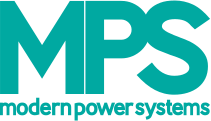
E.ON and the inter-municipal waste company ARC have signed an agreement concerning the CopenCapture project in Copenhagen. The project aims to capture 400 000 tons of CO2 annually from the stack at CopenHill waste-to-energy plant and store it underground. E.ON and ARC hope to transform the plant into an international flagship for CO2 capture and storage.
The new partnership agreement marks E.ON’s prequalification in the Danish Energy Agency’s CCS tender, which mandates full CO2 capture by 2030. The implementation of CopenCapture is contingent on financial support from the CCS funding scheme.
Part of the emitted CO2 at CopenHill originates from organic materials, such as contaminated paper and cardboard. This CO2 is classified as biogenic, and capturing it will result in so-called negative emissions – CO2 from a natural carbon cycle that is permanently removed from the atmosphere – which can be sold as climate credits, specifically high-quality carbon removal credits (CRCs). These credits will be traded on the voluntary CO2 credit market, where companies can purchase CO2 reductions either as compensation or as a contribution. “Electrification can reduce many types of CO2 emissions. However, we do not yet have the technologies to eliminate the need for environmentally responsible treatment of residual waste that cannot be reused or recycled. Utilising residual waste to generate local heat and electricity for communities and businesses is the best available solution. However, waste-to-energy (WtE) still faces a challenge: CO2 emissions from the process. This is why CO2 capture in waste-to-energy is a crucial climate solution that we, as a company, are committed to contributing to,” says Marten Bunnemann, CEO of E.ON Energy Infrastructure Solutions.






